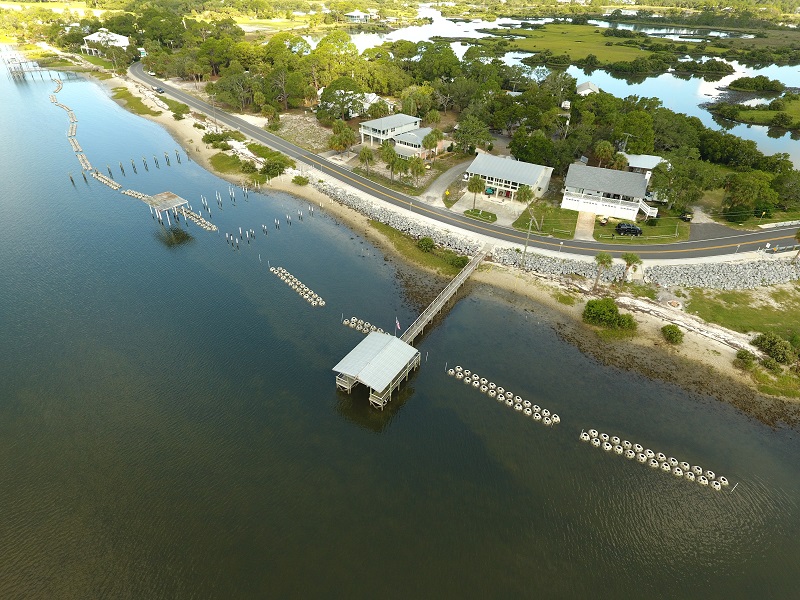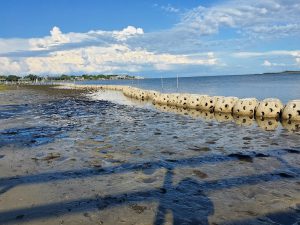A growing demand for living shorelines
Living shorelines are softer, greener alternatives to stabilize shorelines from erosion, sea level rise, and other damage. They protect, restore, or enhance natural shoreline habitat and maintain coastal processes through the strategic placement of plants, oyster shell, and other structural organic materials. Demand for these structures is increasing, and a new course offers a mechanism to increase the supply of contractors who can fill this need.

Marine Contractor Living Shoreline Training Courses – 2023-2024
New! Coming in 2023-24, Florida Sea Grant will offer 12 courses throughout Florida. These courses will be 2-days and will in an in-person format. Please contact Mandy Baily (mbaily@ufl.edu) for more details and check back often for updates.
Marine Contractor Living Shoreline Training Courses – 2021
In 2019, The Florida Fish and Wildlife Conservation Commission (FWC) released a curriculum to help marine contractors learn to install living shorelines. The curriculum develops skills contractors need to design, permit, implement, monitor, and maintain living shorelines for property owners, either alone or in addition to an existing seawall or other structure.
In 2021, Florida Sea Grant Agents are offered three editions of a virtual version of the course. The course covered the entire curriculum created by FWC and included a self-guided shoreline site visit. Contractors, regulatory staff, and other living shoreline practitioners from around Florida are invited to participate in this course. The course fee includes a full-color copy of the manual, continuing education units (see below), and instructional resources.

Day 1 featured live online content from 8:30 AM – 12:30 PM and Day 2 featured live online content from 1 – 5 PM. In the intervening time (afternoon of Day 1 or morning of Day 2), participants were asked to complete a shoreline site visit using materials presented in the curriculum. There are many living shoreline sites available to visit depending on where participants are based. Registrants were given guidance on selecting a site to visit if they did not already have one in mind.
Continuing Education Credits offered:
- 6 credits from the Construction Industry Licensing Board (CILB) (pending approval)
- 6 credits from the SER’s Certified Ecological Restoration Practitioner (CERP) program
Questions can be directed to Savanna Barry (savanna.barry@ufl.edu), Armando Ubeda (aubeda@ufl.edu), or Vincent Encomio (vencomio@ufl.edu).
 1
1



